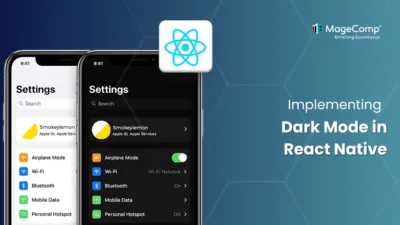Custom components in React Native are the blocks that can be reused, with associated behavior, for specific UI elements. The use of custom components provides a way of maintaining and reusing code while also providing more predictable structure to your project.

Benefits of Using Custom Components
- Reusable – Write it once, use it throughout the entire application.
- Maintainable – Changes, updates, and debugging can be easier to trace when you are using isolated components.
- Readable – Adds a layer of structure that enhances a user’s understanding of the codebase.
- Faster Development – You develop the custom component once, and then you can just implement it where necessary.
Example to Create Custom Components in React Native:
Step 1: Custom Button Component
/components/CustomButton.js
import AppStyles from '../config/styles';
import React from 'react';
import { TouchableOpacity, Text, StyleSheet } from 'react-native';
const CustomButton = ({ title, onPress = () => { } }) => {
return (
<TouchableOpacity
onPress={onPress}
activeOpacity={0.7}
style={styles.buttonView}>
<Text style={styles.text}>{title}</Text>
</TouchableOpacity>
)};
const styles = StyleSheet.create({
buttonView: {
height: 55,
width: '100%',
backgroundColor: 'black',
marginVertical: 20,
justifyContent: 'center',
alignItems: 'center',
borderRadius: 5
},
text: {
fontWeight: 'bold',
fontSize: 18,
color: 'white'
}
})
export default CustomButton;Step 2: Use it in your App
import React from 'react';
import { StyleSheet, View } from 'react-native';
import CustomButton from './components/CustomButton';
const APP = () => {
const validate = () => {
console.log("welcome To React Native")
}
return (
<View style={styles.main}>
<CustomButton
title="Submit"
onPress={validate}
/>
<CustomButton
title="Close"
onPress={validate}
/>
</View>
)};
const styles = StyleSheet.create({
main: {
padding: 10,
flex: 1,
justifyContent: 'center',
alignItems: 'center'
}
})
export default APP;Output:

Conclusion:
Custom components are the basis for a well-structured React Native application. Custom components assist developers in writing clean, reusable, and scalable code. The more complexity derived from a project, either mobile or otherwise, the more time-efficient the custom components will make you as a developer.






